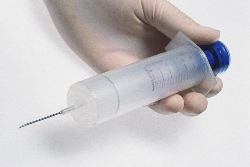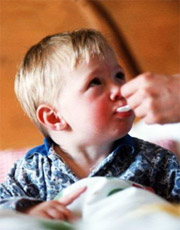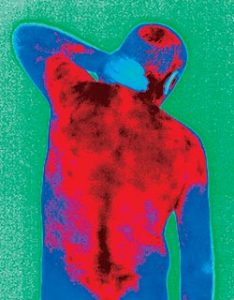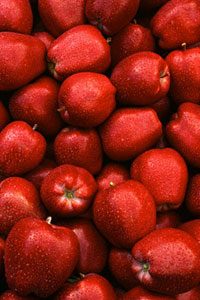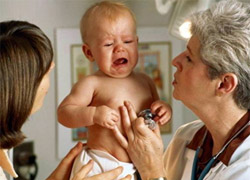Vampirism for the good
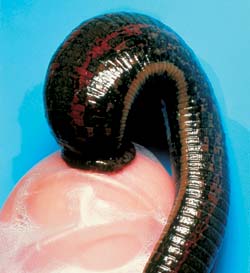 Leech – omnipresent. They live all over the world except the Arctic and Antarctica. The main distinguishing feature of all 400 species of these animals, belonging to the class of freshwater ringed worms, is hematophagy, meaning that they feed on blood. However, among all this diversity, medical leeches are of medical interest. Modern research confirms that hirudotherapy is a potent treatment method used in almost all areas of medicine.
Leech – omnipresent. They live all over the world except the Arctic and Antarctica. The main distinguishing feature of all 400 species of these animals, belonging to the class of freshwater ringed worms, is hematophagy, meaning that they feed on blood. However, among all this diversity, medical leeches are of medical interest. Modern research confirms that hirudotherapy is a potent treatment method used in almost all areas of medicine.
Biological “factory”
Despite the seeming primitiveness, the medical leech, unlike other bloodsuckers, regardless of the degree of hunger, is very scrupulous about the choice of the place to which it will stick.It can be attracted by the skin, which has no extraneous odors, on which it selects the warmest part, the richest in blood, and finds biologically active points through which it acts on the blood vessels, energy meridians, and through them – on the internal organs and systems of the person.
As the leech saturates noticeably increases in size, because it drinks 3-5 times its weight (and it usually amounts to 1-3 g) and at the same time throws saliva into the bloodstream – a unique balanced complex of biologically active substances, for which the leech is called “Pharmaceutical mini-factory”. As a result, the bloodstream is unloaded, the blood is partially renewed and the protective forces of the human body increase. The “production” of leech saliva quickly penetrates the tissues, aided by the secreted enzymes of the leech, which activate the transport properties of the blood. Already 20 minutes after the leech has been taken, the components of her secret disappear from the hole, where she stood – they are carried by the blood flow throughout the body. Interestingly, the leech treats the bite site with substances that prevent blood clotting, so that it becomes like a continuation of a blood vessel, and even after the worm disappears from the skin, the outflow from the wound occurs for a long time.
The most studied to date among the biologically active compounds of leech secretion is hirudin, which has an antithrombotic effect. It inhibits the activity of the enzyme thrombin, preventing blood clots from forming. Destabilase, like hirudin, affects the blood coagulation processes, but realizes it differently – breaking the isopeptide bonds that hold fibrin side chains together. Acting in this way, the enzyme as it separates the fibrin-polymer into fragments soluble in blood plasma.
Facilitates the access of biologically active substances to the enzyme hyaluronidase, which increases the permeability of tissues, and in particular the walls of capillaries, and thus various substances introduced from the outside enter the cells unhindered. And such an enzyme as organella even promotes the formation of new blood vessels. As a result, edemas and blood clots in the walls of blood vessels dissolve and normal movement of fluids in the affected organ is restored. Another interesting substance found in leech saliva is the enzyme collagenase. It is able to destroy the long threads of collagen protein, which is formed in the process of wound healing and promotes the resorption of keloid scars.
A complete list of useful enzymes and compounds of leech secrets today is practically deciphered, but the effect of most of them is only to be studied.
Treatment of the emperor Galerius with leeches Living medicine
Known methods of using leeches for medicinal purposes, which later became an independent area of medicine and received the name “baldoterapiya” or “hirudotherapy” (the first from the Greek word “bdella” – “leech”, the second from the Latin “girudo”), about 3 thousand . years old. Although in fact use the healing power of annelids started even earlier. The most ancient of the reliable evidence of this is the image found in Egypt in the tomb of the pharaohs of the 18th dynasty (1567-1308 BC), which depicts a doctor putting a leech on the crown of a ruler.
Among healers of our era, the appointment of leeches to the patient was included in the list of compulsory procedures for many diseases. Thus, in his Encyclopedia of Natural Sciences (1st century), Pliny spoke about their usefulness “with sickness and every fever”, and not less famous Arab scholar Avicenna in the fundamental work written in verse, “The Canon of Medical Science” recommended hirudotherapy for treatment tuberculosis, concussion, hysteria and epilepsy.
Since the Renaissance, leeches have become the primary means of medical care. However, paradoxically, with all the breadth and ubiquity of using the treatment system did not exist. Where and how much to put them was determined exclusively by empirical means.
And only thanks to the scientific systematization of centuries-old experience by prominent clinicians GA. Zakharyin, N.I. Pirogov, M.Ya. Mudrov, I.E. Dyadkovsky in Russia appeared the first medical techniques.
